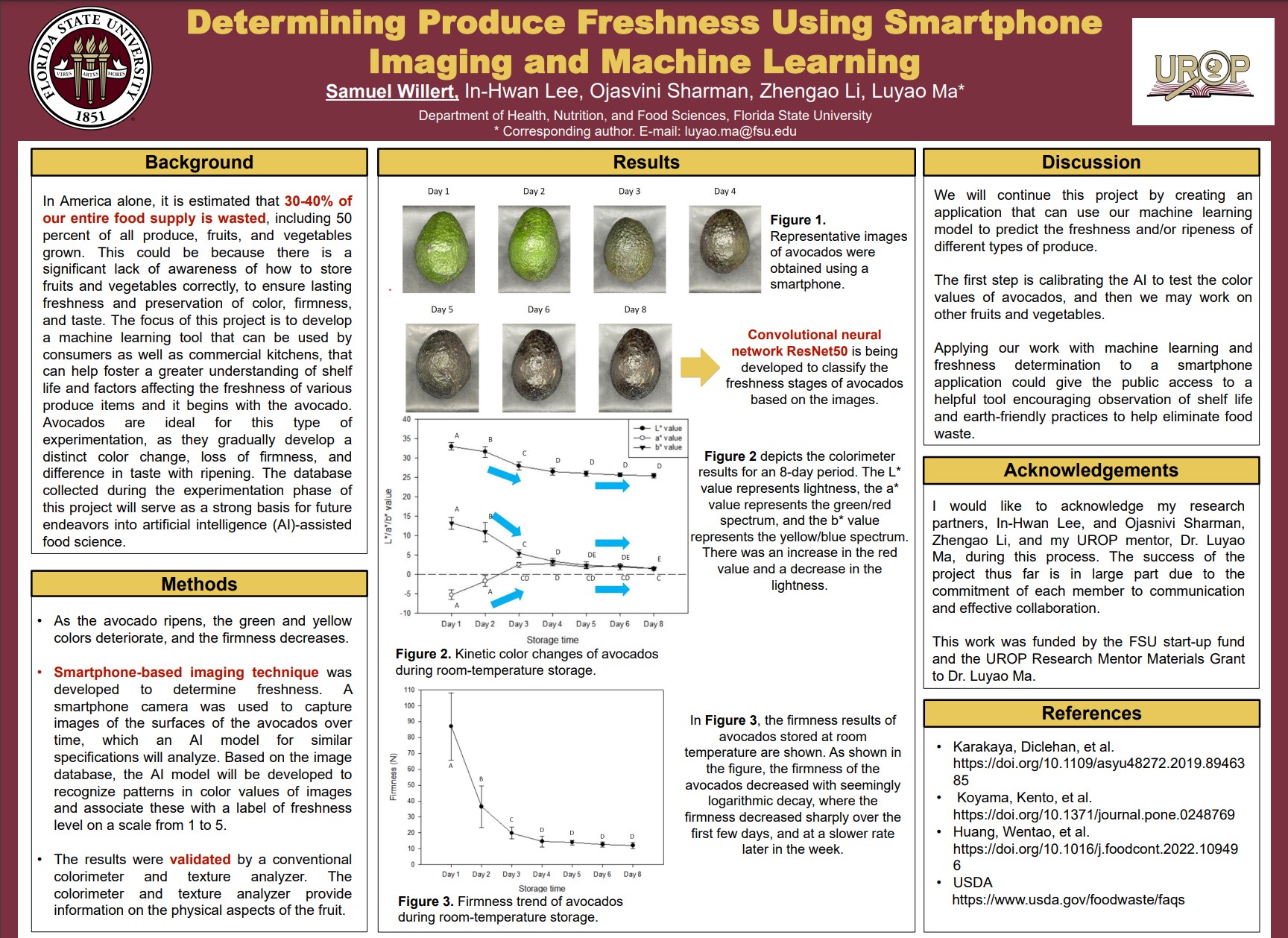Research Symposium
24th annual Undergraduate Research Symposium, April 3, 2024
Samuel Willert Poster Session 5: 4:00-5:00 PM/279

BIO
I am studying to attend medical school and eventually practice anesthesiology ideally. I have lived in Florida my whole life, and growing up in Pensacola, I always shared my mother's love for helping people. As a pediatrician's son, I was frequently exposed to hospital life, and knew how important the care my mom provided was. I knew I wanted to do research in the area of health, a project that could give me an entry look into the field, and inspire me to do further research in these areas. I definitely desire to do more in the area of artificial intelligence, as I believe with the right push, machine learning could be a profound factor in the medical industry, helping to save and better even more lives in the years to come.
Determining Produce Freshness Using Smartphone Imaging and Machine Learning
Authors: Samuel Willert, Luyao MaStudent Major: Biomedical Engineering
Mentor: Luyao Ma
Mentor's Department: Health, Nutrition, and Food Sciences Mentor's College: Florida State University Co-Presenters:
Abstract
In the United States, more than $408 billion worth of food is wasted each year, including 50% of produce such as fruits and vegetables. This food waste, especially in restaurant and commercial kitchens, is partially due to a general lack of methods for determining the freshness and remaining shelf-life of produce. This project aims to develop a consumer-friendly method that allows individuals to assess the freshness of produce. This will empower users to plan their fruit intake effectively and minimize food waste. Avocados were selected as the representative produce model due to their popularity. The avocados exhibit a noticeable color change, loss of firmness, and a shift in taste as they ripen, making them an ideal choice for this study. Avocados were stored at room temperature for up to 8 days to mimic the common storage condition. The freshness of avocados was assessed daily using a smartphone to capture images of the surfaces of the avocados. These images were then fed into and processed by an AI, machine-learning model to classify 5 freshness levels, based on color, lightness/darkness of the skin, and even texture. The results are then validated by comparing them to the standard methods, including colorimeter and texture analyzer. The colorimeter and texture analyzer provide information on the physical aspects of the fruit. This study provides a potential non-destructive, rapid, and easy-to-use method for consumers to reduce their home food waste.
Keywords: Produce, Artificial Intelligence, Freshness, Shelf life, Machine Learning


